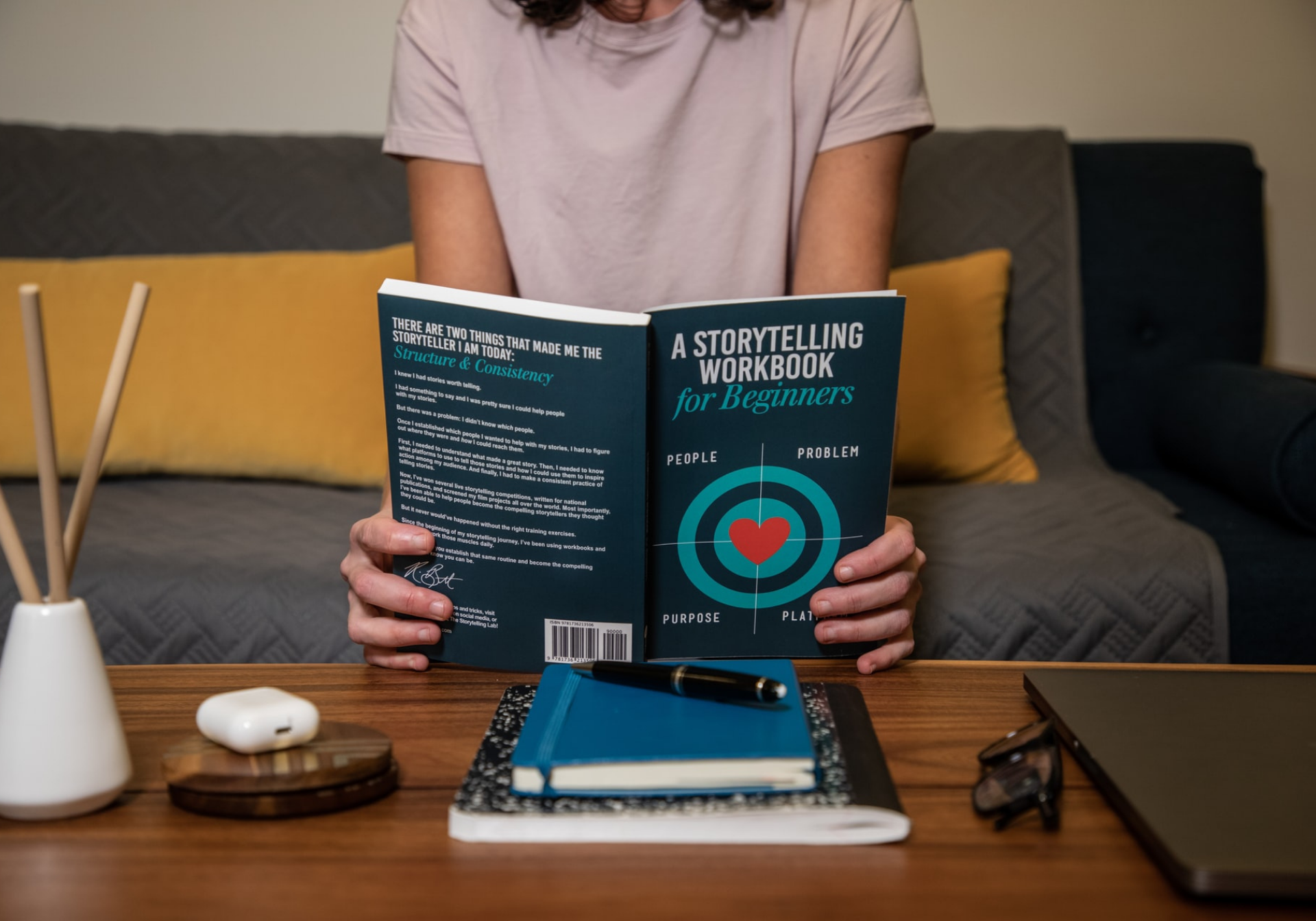3 Tips to A Good Storytelling
The essential guideline to becoming a storyteller

On a breezy Sunday evening, as Evelynn walked on a footpath sipping on her hot chocolate thinking silently of how wonderful the weather is, her thought got interrupted when she saw a tiny little girl wearing what seemed like a top that didn't fit her tiny figure at all, selling roses to a passerby not too far from where she was.
As Evelynn approached her, the little girl handed a rose and said “Here’s a flower for you, ma'am”.
Evelynn accepted the flower and asked, “you’re so young, what are you doing selling these roses here”?
“I have to feed my family. Hunger is an enemy for us, to fight with that cruel foe, I have to sell roses here.”, she answered.
Tears rolled down from her eyes to cheek with sympathy. So she bought a handful of roses from that little warrior girl to help her fight with the invisible enemy.
Now, how do you feel after reading that short story?
We’ll give you time to digest that while we jump into the serious stuff - The rules of storytelling. To begin with, storytelling, or in this case, content marketing storytelling is about moving the needle, reaching your customers, and telling your brand story. Marrying that reason, that business aim, with an entertaining narrative, is where the art of storytelling comes into play in marketing, and it's a skill that requires constant practice in order to master the art.
If you are not telling a narrative, you are merely sharing facts or repeating a tale that we have previously heard. This does not entertain nor engage, but rather reads like another weak piece of information that anybody might have produced. To develop good content, you must tell a story, and we will give you a few ways for doing so.
1/ Don't rush and enjoy the process

We mean it. Before you start writing anything, please go ahead and calm yourself down and gather your thoughts first. This is the first rule that every storyteller must remember - Take your time. Nobody’s rushing you.
We understand, your train of thought may be running at 100km/h but this may detract you from the story. Don’t be afraid to let your listeners ponder for a moment. Allow the anticipation to develop because the pauses you create are going to be one of the most critical aspects of any story.
A good idea is to consider the story beforehand – where should you pause for maximum effect? Usually, you will want to make pauses before the climax or when something unexpected happens, so that your audience can take it all in.
The point is, if there’s a narrative to tell, it probably has some merit. It could be interesting, informative, or significant for other reasons. As a result, you should convey that to the audience. Don't speed through the story; instead, take it in step-by-step. Allow the story to unfold and demonstrate how much fun each of the segments is.
2/ Have a framework

Plan your stories first; Image via Adolfo Félix
Remember how in high school we were taught to write our essays in the format of introduction first, then comes your main point, the second point, and the third point, followed by your conclusion towards the end?
Yes. Your teachers didn’t do that just to waste your time. They did it for a reason and the reason is, it’s helping you to have a clearer structure for the stories you’re about to write. It’s up to you how you want to create the framework but just don’t skip the step, because it’s a great storytelling strategy to write out what you plan to say.
As your storytelling abilities improve, you may grow more comfortable ad-libbing. However, if you are new to the art of storytelling, don’t fear to over-prepare. Even a skeletal outline of your topic, subheadings, and a few bullet points will help you stay organized and produce a cohesive story that will keep the reader interested.
If you’re unsure of where to begin, here’s how you can get started by using XMC’s proud formula of A.I.D - Analyzing, Identifying, Determining. On that note, the A.I.D formula has been continuously incorporated into the creation of stories for all the property, corporate, startups, lifestyle, and beauty brands that we’ve been lucky to work with. If you’re someone who’s from the property industry, we have something for you in this article.
We didn’t tap into your industry? Well, reach out to us today and we’ll start crafting sellable stories for you!
3/ Who are you talking to?

Understand that there’s an audience listening to you; Image via Yannivk Pulver
That’s right. Identify your target audience so you can create a tone of voice that best fits your chosen niche of audience.
Good writers and storytellers know why an audience is giving them attention in the first place.
Who do you want to reach with your story? Your audience guides the topics, message, and overall tone. For example, when writing about social issues, we tell personal stories, with real-life anecdotes, in a conversational manner, like in this article on Stop the Blame Game.
However, on the topic of business, we tend to be slightly technical with a professional tone. Just like the one we wrote about The Art of Minimalism in Marketing Communication.
When you understand your audience, you can communicate directly to them and their values, in their preferred language, and present them a tale that they are passionate about.
Overall, you'll become a better storyteller if you keep your target audience in mind at all stages of your own storytelling, from gathering story ideas to composing to actually delivering your fantastic narrative.
Appreciate the Art of Storytelling
We enjoy sharing stories, especially when we can assist other companies or leaders in developing their message. At XMC, we believe that the art of storytelling in marketing is found within an intriguing story that also supports a corporate aim.
While it can be a narrow line to walk, you, too, can master the art of storytelling with practice and coaching. Wait no more! Say hi to us and tell us your concerns or goals at info@xaviermah.my and we will help you to develop “Stories Worth Telling”.


